Something to chew on - the rising popularity of meal kits
- Published

Sometimes cooking a meal completely from scratch is just too much of a struggle
You know what it's like. You get home after work exhausted, the fridge is empty, and before you know it you're dialling the number of your nearest takeaway. Cooking at the end of a long day can be overwhelming.
But there is increasingly an alternative option on people's nightly menus - meal kits sent out to homes in the post.
Helping breathe new life into dinner or lunchtime, meal kits supply pre-measured ingredients and full recipe instructions, which aim to help make the process of cooking at home as simple as the 1950s fantasy.
The industry - which has its roots in Sweden - had $1bn (£702m) in global sales in 2015. And this is expected to increase to $5bn over the next 10 years, according to consulting firm Technomic., external
Big players like US firms Blue Apron and Plated, UK businesses Gousto, and Germany's Hello Fresh, have done a lot of the ground work, educating consumers and getting them comfortable with the idea of ordering measured ingredients that they cook themselves.
Now smaller, niche players are getting in on the act, offering specific meal kits tailored to particular dietary preferences, food styles and health trends.
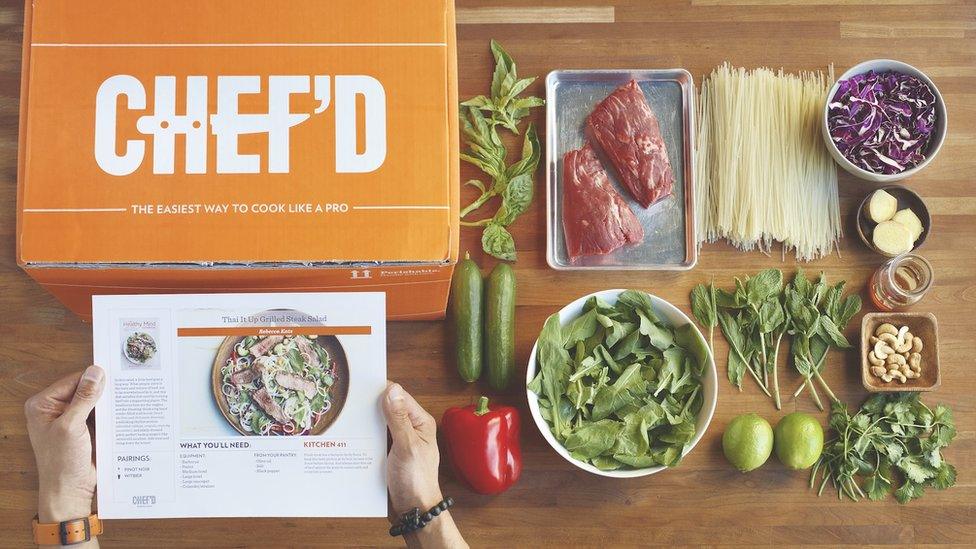
The meal kits deliver pre-measured ingredients and recipes in one box
Food style
Purple Carrot has taken the vegan approach. Andrew Levitt launched the brand in 2014 in the suburbs of Boston after learning about the benefits of a plant-based lifestyle.
Mr Levitt, like most of his customers, is not a vegan, though he eats mostly fruit and vegetables.
After two decades working in the pharmaceuticals industry he was inspired to change direction by a TV documentary "Forks Over Knives" that focused on how a plant-based diet can help improve people's health.
Mr Levitt and his wife began testing recipes in their kitchen at home, making sure they were all "kid approved" by their three young children. They also gave prototype kits to their nanny to test how easy they were to use.
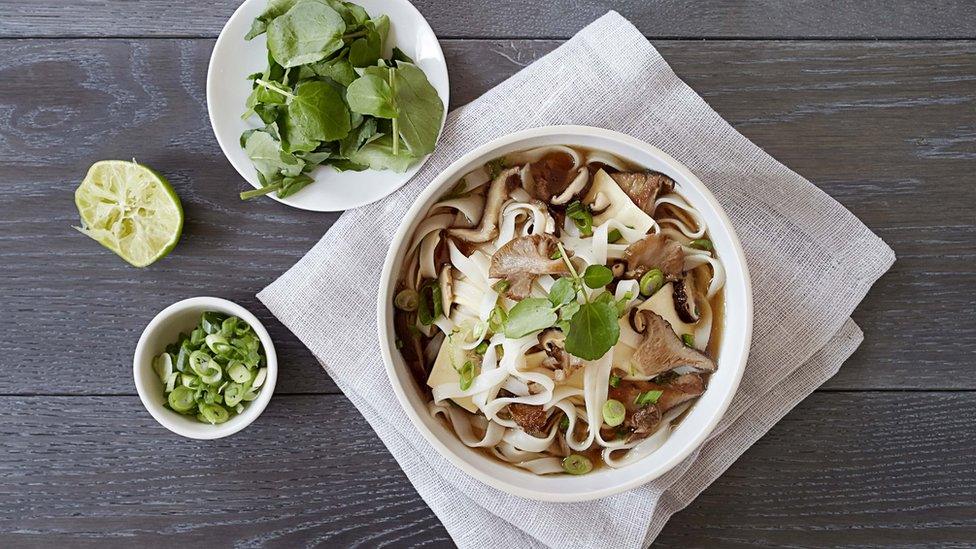
Purple Carrot serves up vegan versions of dishes from all over the world
The company's focus has struck a chord with home-cooks looking for an easy way to whip up vegan dinners. It now has 18 full-time employees, and early investors have given the company $4m to try and help it dominate its particular niche.
Last year, Mark Bittman, a former food writer for the New York Times, joined, helping to expand the company's range of vegan recipes.
Mr Levitt admits the firm has benefitted from a lack of vegan-focused competition.
"If Purple Carrot does its job right we will have all the space around plant-based meal kits," he says.
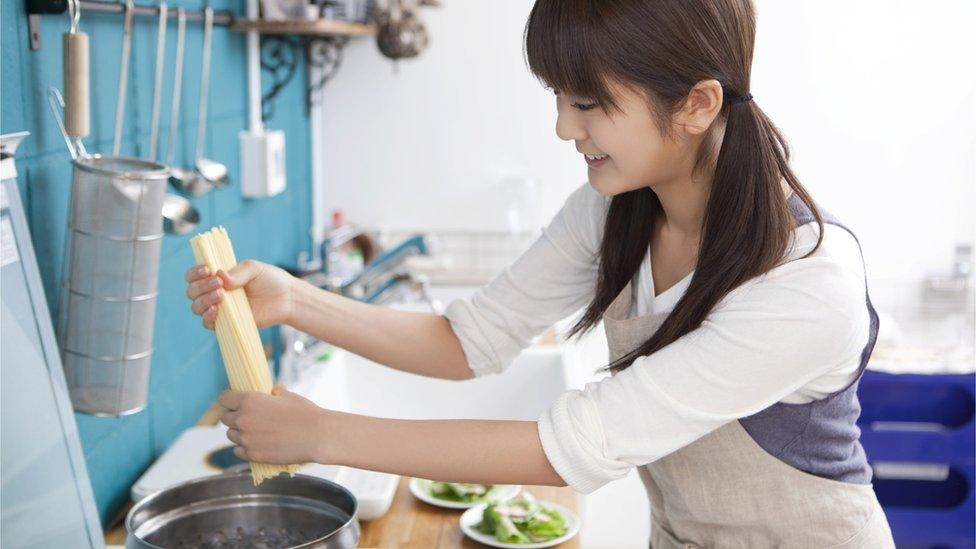
Meal kits are making it easier for people to cook at home
Subscription model
Dishes made from meal kits cost on average $11 (£7.50), slightly higher than buying ingredients at the store.
But as the companies explain, shipping pre-measured ingredients cuts waste - grocery stores do not sell a tablespoon of soy sauce.
For most meal kit providers though, the customers do not shell out for an individual meal, they pay for weekly or monthly subscriptions.
Mr Levitt says the subscription model makes it easy for customers, and guarantees sales for the business.
Yet Kyle Ransford, founder of California-based Chef'd, has rejected that idea and instead allows users to order one-off meals.
"The problem with the subscription is if you like something you can't order it again," he says. "We think the consumer doesn't want to be slotted into this system."
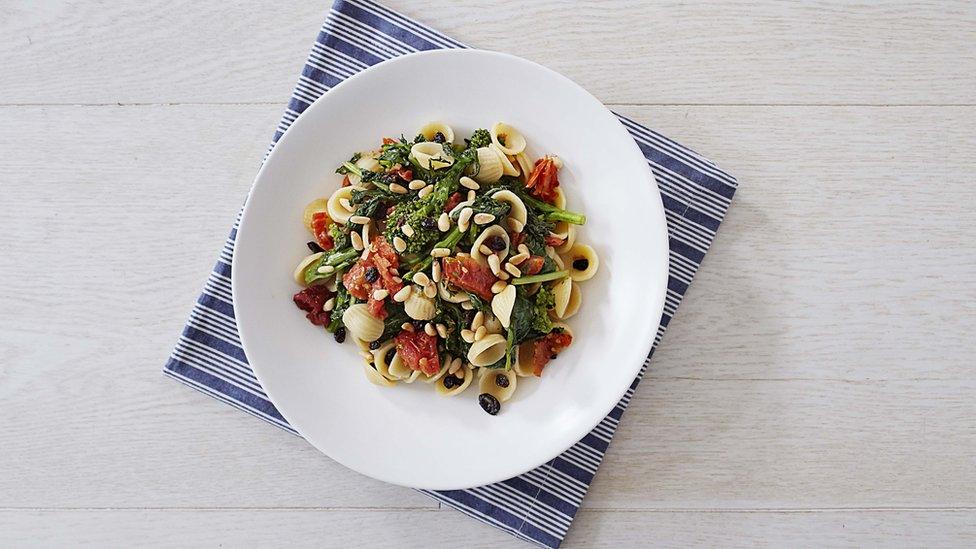
Half of Purple Carrot's users are not full-time vegans
The "a la carte", one-off orders model has been tried by others. Plated - the second largest meal kit service in the US - initially offered both one-off orders and a subscription service, but eventually dropped the former.
"The move to purely subscription was a logical step in enabling Plated to become a core part of our customers' weekly dinner routine, and has been an important factor in our growth," says Aamir Basheer, vice president of retention and loyalty at Plated.
But Mr Ransford, who would not disclose Chef'd sales, believes pre-set menus will eventually turn users off.
Baked
As users have become used to meal kits they aren't just buying ingredients for a savoury main course.
Red Velvet NYC is the brainchild of two sisters who grew up in a culinary-focused family. The company sends everything needed to make tarts, sweet pies or cakes at home.
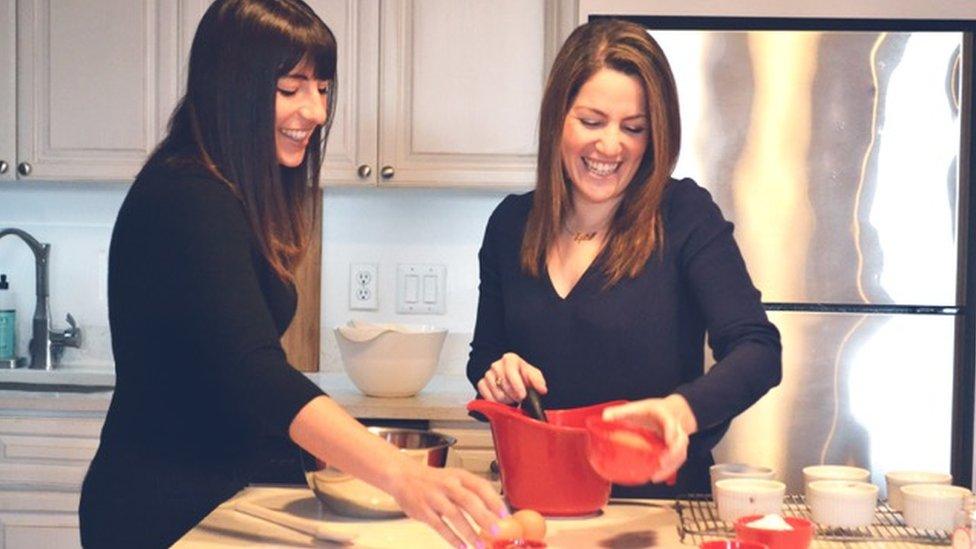
Sisters Arielle (l) and Agathe Assouline-Lichten want to make baking accessible
"I grew up with a love of good food," explains co-founder Agathe Assouline-Lichten, whose father was a specialty food importer.
After a decade in marketing she decided to turn that love into a business and help people overcome the challenge of whipping up luxury desserts at home.
"It's one thing to have a party with a spread of cheese and crackers, it's another to pull a homemade dessert out of the oven," she says.
Ms Assouline-Lichten launched her New York business in September as an a la carte service charging $24-$30 per dessert. She plans to expand to a subscription model this summer, sending baking kits once a month.
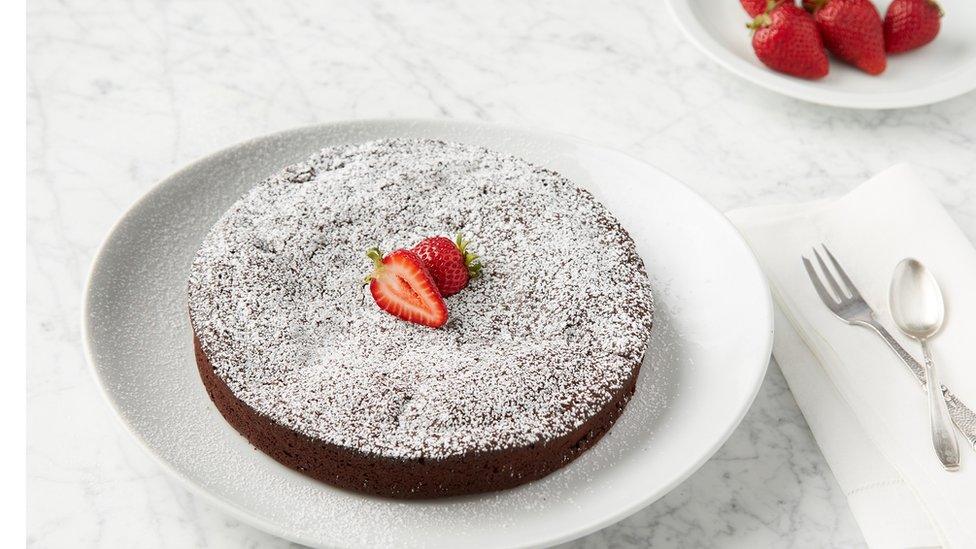
RedVelvetNYC hopes to make home cooks more confident bakers
"I wanted a proof of concept," she says, and adds that she now plans to start looking for private investors.
As the business has developed it has expanded the products that it sells, and it now offers pans, whisks, and even birthday candles.
Ms Assouline-Lichten says Red Velvet is trying to capture the celebration aspect around baking, and make the process as seamless as possible.
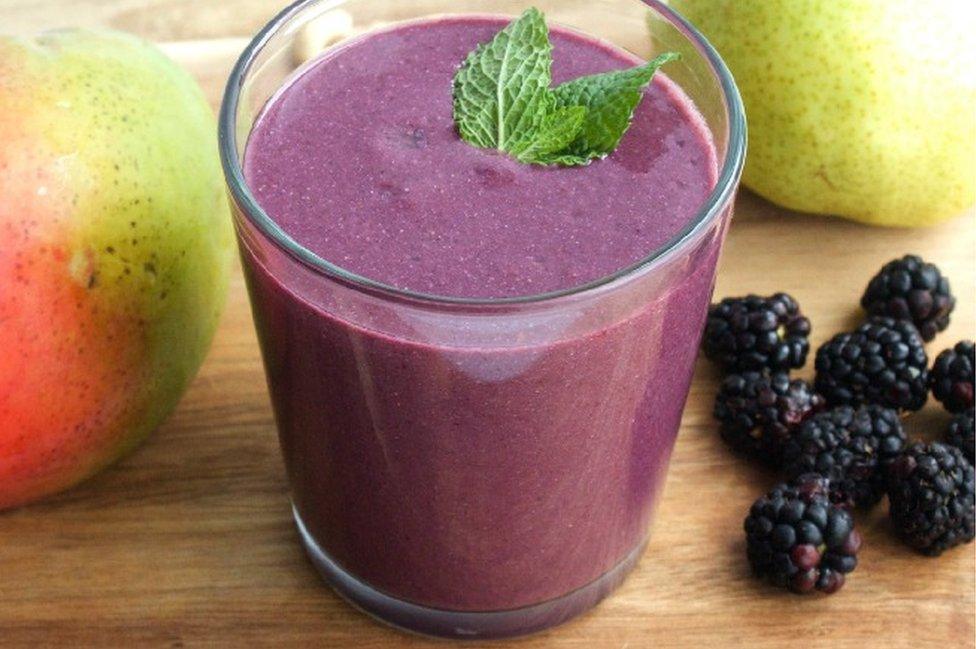
Green Blender uses ingredients that would often be difficult for people to otherwise find
Health kick
The overall meal kits sector markets itself as healthy because the food is fresh and prepared at home. But some companies have taken that one step further, focusing on specific diet trends.
New York-based Green Blender sends boxes of fresh ingredients that customers blend into smoothies at home for a subscription price of $49 a week.
Amir Cohen - who started the business with his girlfriend Jenna Tanenbaum in 2014 - says the company is focused on being a health brand rather than a meal kit company. But their concept is the same.
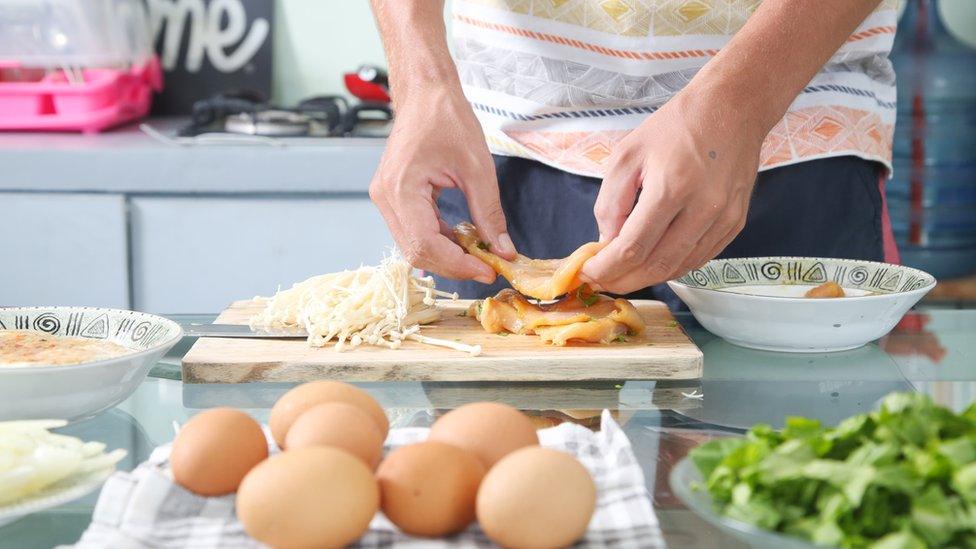
Many smaller meal kit firms focus on delivering high end ingredients that allow them to charge premium prices
"We found that when people were making a health change they saw it as a chore," says Mr Cohen.
He explains that sending out Green Blender's smoothie ingredients and recipes helps ease the process of living a healthy lifestyle, much like ordering meal kits for dinner makes cooking at night much less hassle.
As people become more comfortable with the meal kit ordering concept the jump to ordering all sorts of foods to prepare at home is likely to only grow further, forever changing what it means to be a home chef.